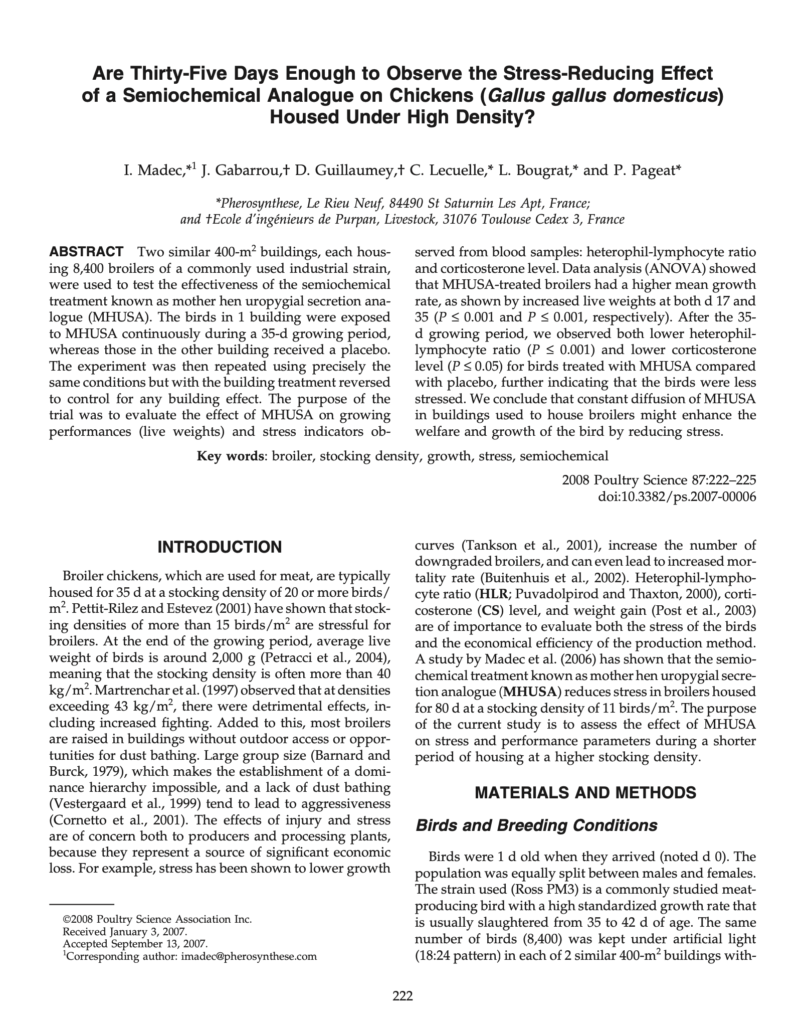Abstract:
Two similar 400-m2 buildings, each hous- ing 8,400 broilers of a commonly used industrial strain, were used to test the effectiveness of the semiochemical treatment known as mother hen uropygial secretion ana- logue (MHUSA). The birds in 1 building were exposed to MHUSA continuously during a 35-d growing period, whereas those in the other building received a placebo. The experiment was then repeated using precisely the same conditions but with the building treatment reversed to control for any building effect. The purpose of the trial was to evaluate the effect of MHUSA on growing performances (live weights) and stress indicators ob-
served from blood samples: heterophil-lymphocyte ratio and corticosterone level. Data analysis (ANOVA) showed that MHUSA-treated broilers had a higher mean growth rate, as shown by increased live weights at both d 17 and 35 (P ≤ 0.001 and P ≤ 0.001, respectively). After the 35- d growing period, we observed both lower heterophil- lymphocyte ratio (P ≤ 0.001) and lower corticosterone level (P ≤ 0.05) for birds treated with MHUSA compared with placebo, further indicating that the birds were less stressed. We conclude that constant diffusion of MHUSA in buildings used to house broilers might enhance the welfare and growth of the bird by reducing stress.
Auteur: I. Madec, J. Gabarrou, D. Guillaumey, C. Lecuelle, L. Bougrat, and P. Pageat
En savoir plus: https://pubmed.ncbi.nlm.nih.gov/18212363/

